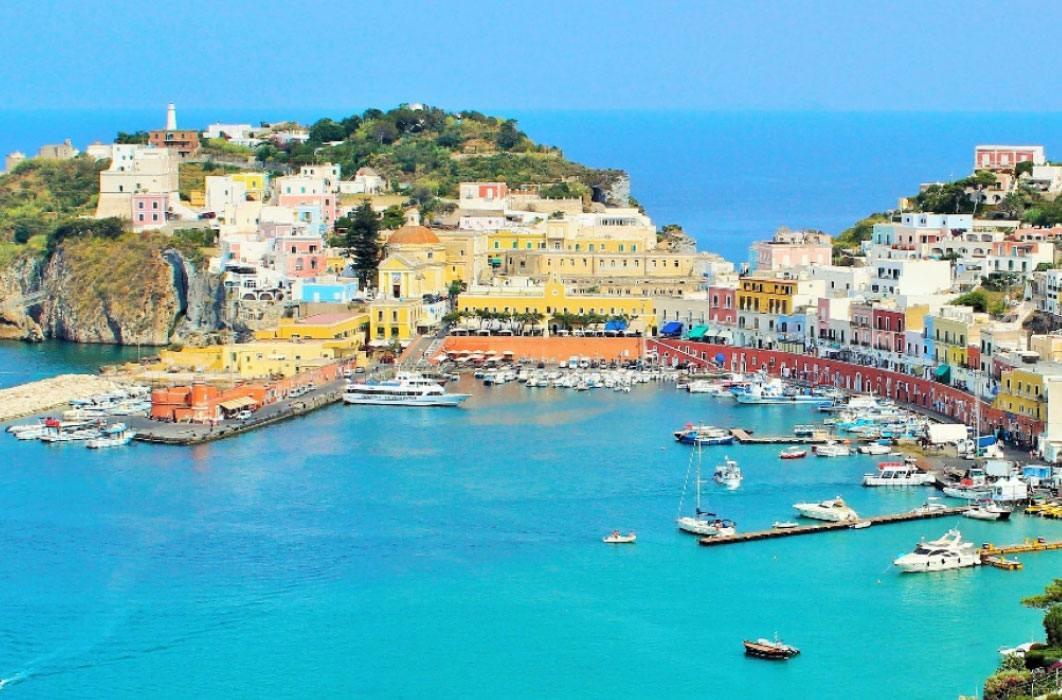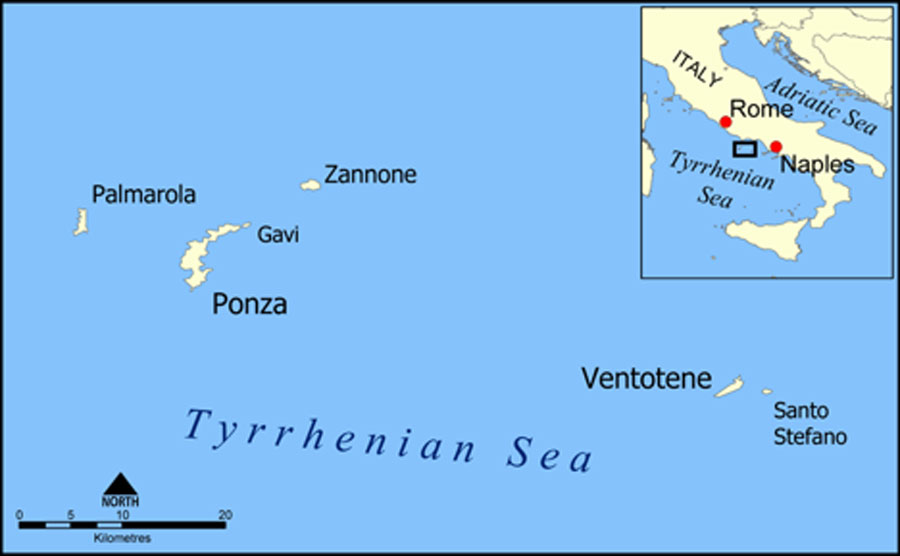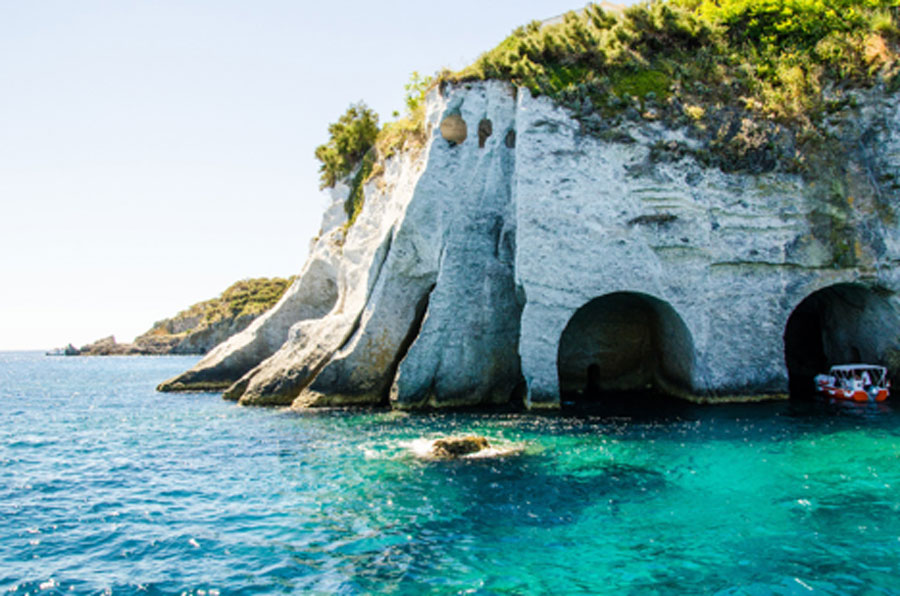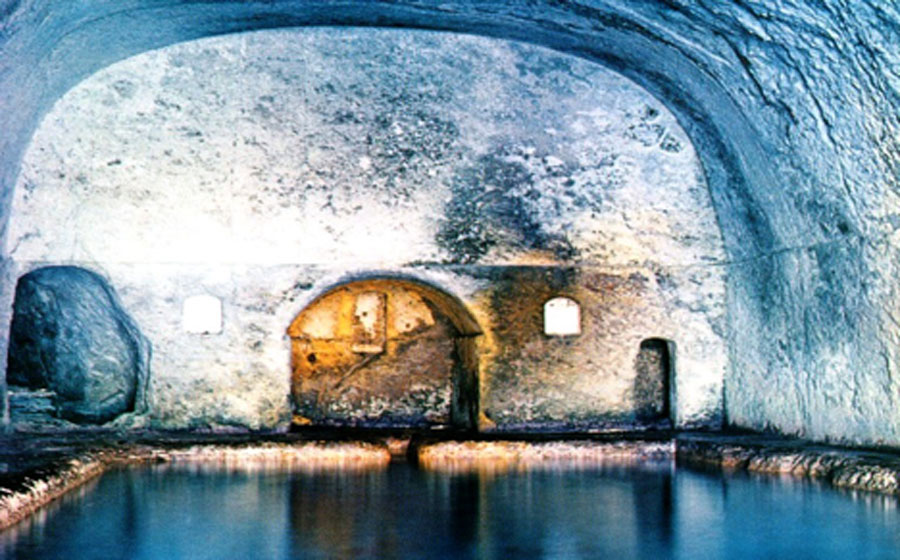
The Curious Roman Cult of the Moray Eel on the Island of Ponza
A mysterious cult in which moray eels decided the fate of men existed on Ponza island, in the Tyrrhenian sea off the coast of Italy, during the first century AD at the so-called ‘Caves of Pilate’. "They ran the delicate moray eels to eat the delicacies offered to them by the visitors: they were salted fish, fresh crushed fruit, shiny crumbs of fresh bread, favorite morsels and in the manner they approached, or rejected with a blow of the tail the delicacies offered, the relegated believed to interpret the future events of their own fate," writes Monsignor Luigi Maria Dies in his book Ponza, perla di Roma: guida storico-tutristica dell'isola di Ponza nel Tirreno (1950). One must take into consideration that the never completely understood Pontius Pilate had nothing to do with the beautiful island and that his name has been undeservedly linked to the magnificent remains of the Augustan villa.

Ponza and the Pontine Islands (CC BY-SA 3.0)
Historical Background of Ponza Island
Pliny the Elder, the wise author of the Naturalis Historia, written between 23 and 79 AD, in Liber IX expands even more on this curious ‘Cult of Moray Eels’ that was practiced on the island of Ponza. In 313 BC the omnipresent Romans granted the island of Ponza the privilege of becoming a Latin Colony, which just under a century later became one of the 18 colonies that came to the aid of Rome, the Eternal City, during the Second Punic War fought against Hannibal. Rome did not forget the loyalty of the islanders and freed them from all taxes and in 89 BC bestowed upon the island the Civitas Romana optimum iure.
Years passed and Gaius Julius Caesar Augustus himself was transferred to Ponza island as a place of confinement. His only daughter Julia as well as his mother Scribonia, were also exiled to the islands for having violated the Lex Iulia de pudicizia et de coerendis, issued in 18 BC by Octavian Augustus in an effort to stem the rampant immorality in Rome. Thus, with one excuse or the other, the Pontine islands were often used precisely to confine dangerous claimants to the throne or people who were banned from court, such as Nero Julius Caesar, son of Germanicus and Agrippina Major, born in Ponza in 6 AD, who spent long years in exile on the island until he committed suicide in the year 30 AD.

Entrance to the Caves of Pilate (By DPI studio/ Adobe Stock)
The Temple of the Sacred Eels
Archaeologists seem, for once, almost all to agree in identifying the ‘Caves of Pilate’ complex as a true and proper Sacred Temple, connected to an external fishpond, used for the culinary needs of the imperial villa above. The precarious tuff - light, porous rock formed by consolidation of volcanic ash – allowed for the excavation of the fishpond below the water level. The main room of the sacred ‘murenario’ (eel fishery) is made up of a semi-cylindrical vault overlooking a large rectangular basin, while on the right one can see another smaller square basin, from where leads a mysterious tunnel that disappears into the rock.

Interior of the Pilate Caves, with the fish pond, ledge for the priest and niche for the deity (Image: Courtesy Dr Roberto Volterri & barcaioliponza)





